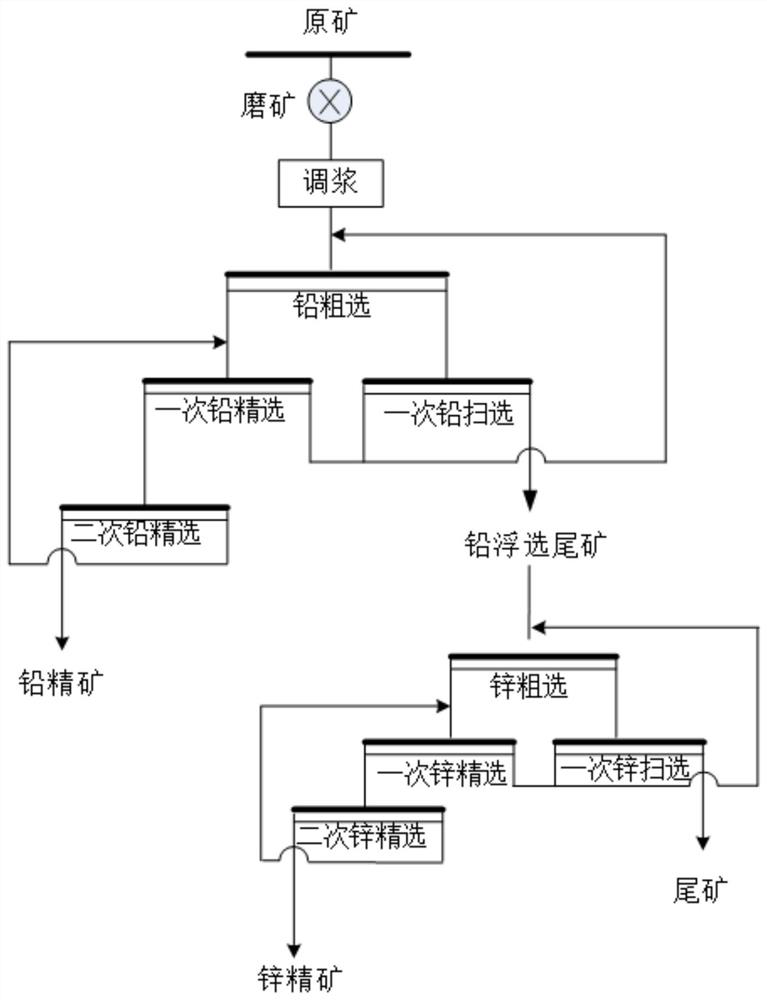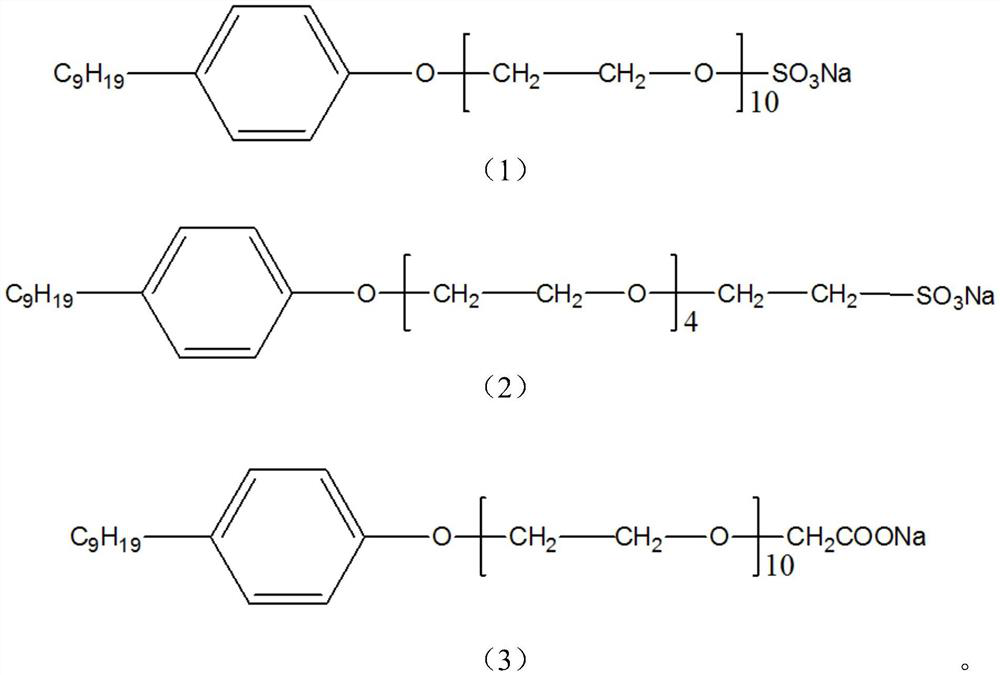Carbon inhibitor in lead-zinc sulfide ore flotation process and application thereof
A lead-zinc sulfide, flotation process technology, applied in flotation, solid separation and other directions, can solve the problem of difficult inhibition of carbonaceous gangue minerals, and achieve the effects of inhibiting carbon flotation, improving mineral processing indicators, and reducing consumption.
- Summary
- Abstract
- Description
- Claims
- Application Information
AI Technical Summary
Problems solved by technology
Method used
Image
Examples
Embodiment 1-3
[0032] A flotation study was carried out on a carbon-bearing lead-zinc mine in Inner Mongolia. The main metal minerals are sphalerite, galena and pyrite, and the grade of zinc is 5.28%, the grade of lead is 2.23%, and the grade of iron is 8.3%. The rest of the metal minerals are low in content. Gangue minerals are mainly dolomite, calcite and organic carbon. The carbon content in the ore reaches 4.75%. The nature of the ore is complex, the symbiotic relationship between lead and zinc is close, the useful minerals lead, zinc and carbon are closely related, and the ore contains a large amount of organic carbon. These carbons have good floatability. If lead and zinc are directly flotationd during the flotation process, the carbon will inevitably enter the lead concentrate and zinc concentrate and affect the concentrate grade. Therefore, the key to solving this ore flotation lies in effective Separation of galena, sphalerite and organic carbon.
[0033] Adopt carbon depressant ...
PUM
 Login to View More
Login to View More Abstract
Description
Claims
Application Information
 Login to View More
Login to View More - R&D Engineer
- R&D Manager
- IP Professional
- Industry Leading Data Capabilities
- Powerful AI technology
- Patent DNA Extraction
Browse by: Latest US Patents, China's latest patents, Technical Efficacy Thesaurus, Application Domain, Technology Topic, Popular Technical Reports.
© 2024 PatSnap. All rights reserved.Legal|Privacy policy|Modern Slavery Act Transparency Statement|Sitemap|About US| Contact US: help@patsnap.com










